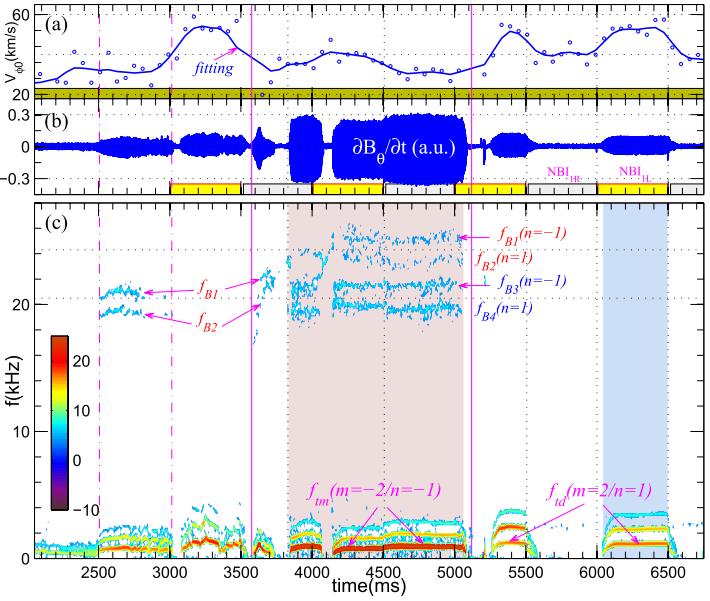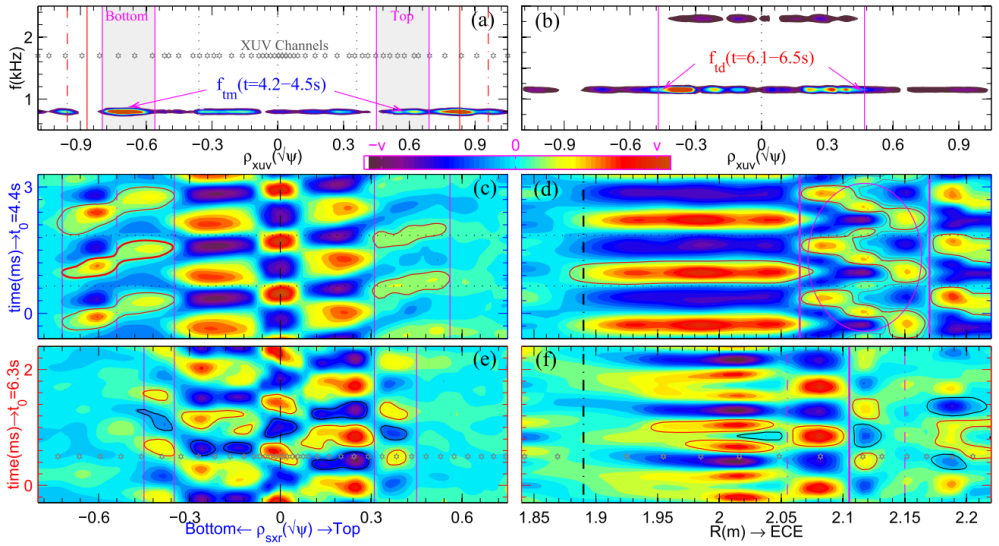
In fusion devices, hundreds-of-million-degree plasma inevitably suffers from collective instabilities, e.g. the Alfven Eigenmodes with non-axis-symmetries. Internal transport barrier (ITB) and reversed magnetic shear (RMS) are two important indicators for achieving high performance plasmas.
Understanding the internal excitation mechanism for the Alfven Eigenmodes instabilities is a key to find solutions to better control plasma instabilities and achieve a higher performance.
Recently, scientists of EAST team found that series of Alfven Eigenmodes were excited during the formation of ITB, i.e. beta-induced Alfven Eigenmodes (BAEs), reversed shear Alfven Eigenmodes (RSAEs) and beta-induced Alfven-Acoustic Eigenmode (BAAE).
The structure of ITB was collapsed and rebuilt periodically for the redistribution of energetic ions (neutron yield), and the sawteeth-like oscillation of energetic ions (or electron temperature) was formed accordingly. The three Alfven Eigenmodes were aroused by the energetic ions at the position of qmin of RMS.
This study furthered the understanding of the basic features and internal excited mechanism for those plasma instabilities, which implied the reliable controlling method might be developed to achieve long pulse steady state operation on EAST and on the future International Thermonuclear Experimental Reactor (ITER) and China Fusion Engineering Test Reactor (CFETR).

Series of Alfven Eigenmodes are excited during sawteeth-like oscillation. (Image by XU Ming)

The excitation conditions versus oscillation period for sawteeth-like oscillation. (Image by XU Ming)

86-10-68597521 (day)
86-10-68597289 (night)

52 Sanlihe Rd., Xicheng District,
Beijing, China (100864)

